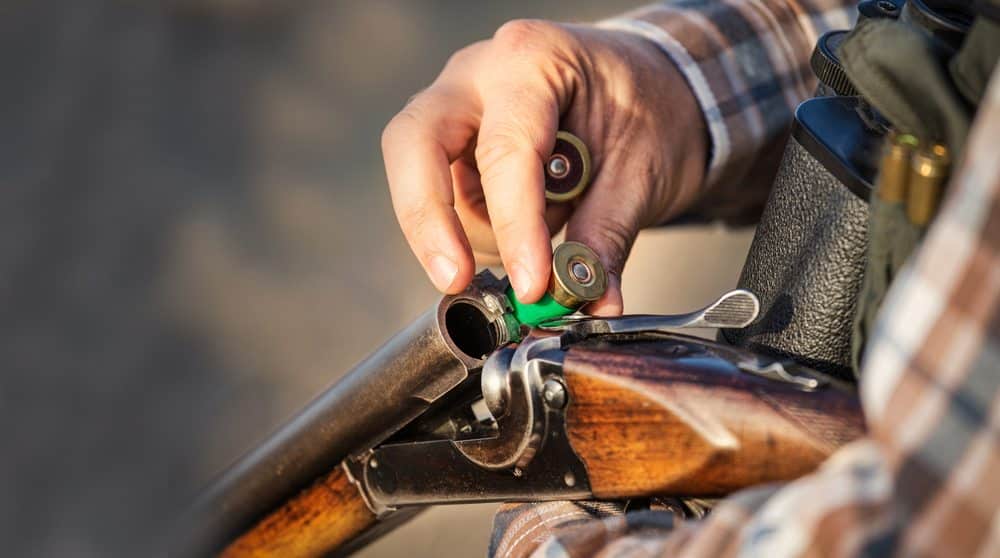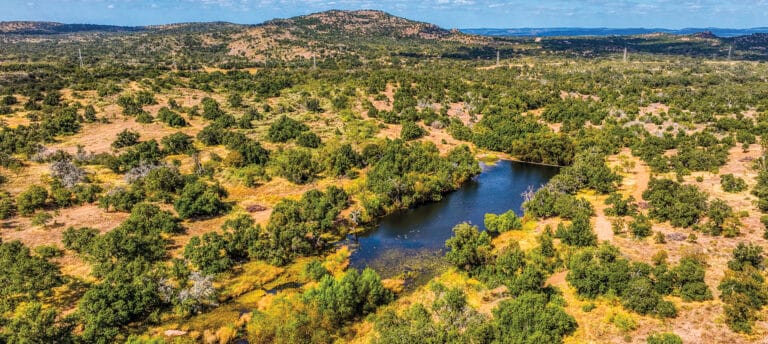The fall season is here and many of us have probably started hunting or preparing to do so. It is very important that we don’t let the excitement of the hunt overwhelm our practice of gun safety. Exercising gun safety can prevent injury or death to the individual, a family member, or a friend. Hunting accidents provide fodder to anti-gun activists, who are dedicated to taking away our constitutional rights to bear arms. So before loading up for hunting camp, please review gun safety practices.
Firearms have been a way-of-life in America since the first immigrant set foot on its eastern shore. During early settlement of our country, firearms were a necessity for obtaining food and for protection. Today they are used for recreation such as target shooting and hunting. Firearm sports are a great way to get youth off the couch, away from television and computer games and into the outdoors.
Many activist groups and individuals loudly preach that firearms increase crime, are responsible for large numbers of fatal accidents each year and should be banned. These people are stating opinions and haven’t bothered to study the facts.
The facts
The National Safety Council reported in 2013 that unintentional firearm related fatalities in the United States remain at historically low levels. Firearm accident death rate is at an unprecedented, annual low at 0.2 per 100,000 people. The death rate is down 94 percent since the highest in 1904 of 3.4. Since 1930, the annual number of firearm related deaths has decreased 81.3 percent while the United States population has more than doubled and the number of firearms has quintupled. Among children, such deaths have decreased 74 percent over the past 20 years and 28 percent during the past 10 years. Today, the odds are more than a million to one, against a child in the United States dying in a firearm accident.
Firearms are involved in 0.5 percent of accidental deaths nationally compared to motor vehicles (27.9%), poisoning (27.3%), falls (21.5%), suffocation (5.1%), drowning (3.1%), fires (2.4%), environmental factors (1.3%) and other (10.9%). Children accidents are caused by motor vehicles (34%), suffocation (27%), drowning (18%), fires (7%), poisoning (2%), falls (1%), environmental (2%), firearms (1%) and other (6%).
We have a good safety record with firearms. Let’s keep it that way or even make it better.
Maintenance
A well maintained firearm is safer to use than one that receives little upkeep. To keep firearms in top condition, they must be cleaned after every use. Gun owners should own a complete cleaning kit and know how to use it.
“If possible, clean the barrel from the breech end to avoid pushing debris into the chamber,” says Rick Ensor, Hunter Education Master Instructor Volunteer, Texas Parks and Wildlife Department (TWPD). “Use a bore guide and a flexible cleaning rod holding a bore-brush or patch wetted with solvent. Pass the brush or patch all the way through the barrel. Repeat this operation several times with fresh patches. Follow with a dry patch and finish with one that is lightly oiled.”
“You may need a larger brush for the chamber,” continues Ensor. “Use a hand-brush to clean the crevices where powder residue accumulates. Finish cleaning with a dry cloth and then wipe all the parts with a light coat of oil.”
Storage
In the TWPD booklet, “Today’s Hunter in Texas – a guide to hunting responsibly and safely,” it is recommended that firearms be stored unloaded, in a locked location and separate from ammunition. Before storing, firearms should be cleaned and lightly oiled. The storage area should be cool, clean, and dry. Storing firearms in closed gun cases or scabbards isn’t recommended because moisture can accumulate.
“Store guns horizontally, or with the muzzle pointing downward,” states Ensor. “When guns are stored upright with the muzzle pointing upward, gravity pulls gun oil downward into the action which forms a sticky film. Oil can also drain onto the stock, softening the wood.”
“Store ammunition, reloading supplies and firearms in separate locked compartments,” recommends TPWD. “Keep ammunition in a cool, dry place to prevent corrosion. Corroded ammunition can cause jamming, misfires and other safety problems.”
Transport
“It is important to transport guns in a manner to maintain safety and longevity of the firearm,” says Ensor. “Position a rifle or shotgun between the seat and console in a pickup with the muzzle pointing downward. If the pickup does not contain a console, lay the gun on a flat surface that is free of other objects.”
There are various types of gun storage apparatuses that can be purchased for pickups at outfitter stores. These include under the seat storage, gun racks that fit on the back of the seat, roof racks, floor-mounted racks and vertical mounts. Ensor does not recommend the use of window mounted gun racks because the display may provoke anti-hunter sentiment and serve as an invitation to thieves.
“A firearm should not be transported with a shell in the chamber,” cautions Ensor. “On the ranch, attach a magazine full of shells to the gun if you feel you might have to use it quickly. A rifle is safe to transport as long as a bullet is not in the chamber.”
“Improper transportation provides an opportunity to get a foreign object jammed in the barrel,” continues Ensor. “If a firearm is fired with an obstructed barrel, the gun will be blown apart and there is a big risk of the shooter being seriously injured.”
Before discharging a firearm, look through the rifle chamber down the barrel to check for debris. Unload the gun and keep the muzzle pointing downward during this inspection. Remove any obstructions with a portable cable-type cleaning rod. After cleaning recheck the barrel.
TPWD recommends that firearms be unloaded and placed in a gun case before transporting off the ranch. They further recommend that the action be open or the gun broken down whichever makes the firearm safer if it is mishandled.
Proper transport, maintenance and storage of a firearm will extend its life and keep it in working order. More importantly, proper care of a firearm may prevent injury or loss of a loved one.
Entering, exiting & crossing
“Some of the fatalities, I have seen, occurred while hunters were either exiting or entering a vehicle,” states Warren Bluntzer, Wildlife Biologist Consultant and retired TWPD game warden. “These accidents could have been avoided if people had obeyed gun safety rules and used good judgment and common sense.”
“A shell should not be in the chamber when exiting a vehicle,” cautions Bluntzer. “Do not load your rifle or gun until you are completely away from the vehicle and can point the firearm in a safe direction. Before putting a shell into the chamber, open the action and make sure that the barrel is unobstructed. Remove any obstructions with a portable cable-type cleaning rod. After cleaning, recheck the barrel. Then put the safety on, load the ammunition and close the action.
“The gun or rifle needs to be safely unloaded before climbing back into the vehicle. Point the muzzle in a safe direction, make sure the safety is on and your finger is outside the trigger guard before removing the ammunition. Count the shells or cartridges to make sure the gun is empty and then check the chamber to ensure it is clear.”
“I have also seen tragic accidents occur when hunters are climbing in or out of deer stands,” says Bluntzer. “People drop their rifles while climbing the ladder and the firearms discharge when they hit the ground or someone accidently pulls a trigger at the wrong time. Use the same safety practices when entering and exiting deer stands that are recommended for getting in and out of vehicles.”
Hardly a year goes by that you don’t read about someone being fatally shot while crossing a fence,” Bluntzer continues. “Always unload guns before crossing fences and other obstacles or when negotiating rough terrain. After unloading, place the gun on the other side of the fence or obstacle to be crossed with the muzzle pointed away from you and your crossing point. Then cross the fence and retrieve your gun.
“If two people are crossing, one person crosses first and then takes the unloaded guns from the other hunter. Always pull a gun toward you by the butt – never by the muzzle.”
Self-control
Inexperienced hunters may become overly excited on a hunt and become unsafe. They may fire at sounds, colors, movements or unidentified shapes. If they hit their target, they may swing a loaded firearm toward their companions or run with the safety off toward a downed animal.
“Lack of self-control particularly occurs on bird hunts,” says Bluntzer. “Hunters lead a bird in flight and don’t notice the locations of their partners before they shoot. This has caused a lot of hunting accidents.”
“Self-control is an essential aspect of hunter safety,” cautions TW&P. “Only shoot when you know the target is legal game and no people, domestic animals, buildings or equipment are in the zone-of-fire. Remember that bullets can pass through game and continue for some distance with deadly force. Slow, careful shooting is not only safer, it produces a higher degree of success.”
Please review and practice gun safety and enjoy the great outdoors experience of hunting.
Contents of a good gun-cleaning kit
• Cleaning rods
• Assorted rod tips – brushes, mop tips, slotted tips, jag tips
• Patches appropriate for the caliber or gauge of the firearm
• Gunsmith screwdrivers
• Gun oil
• Solvent
• Gun grease
• Dental mirror
• Tooth brush
• Bore light
• Clean cloths
• Cotton swabs
• Pipe cleaners
Basic steps for cleaning a firearm
• Point the muzzle in a safe direction and make sure the gun is unloaded.
• Remove all ammunition from the cleaning bench.
• For the most thorough cleaning, field strip the firearm following the owner’s manual and clean each part separately.
• Follow the instructions in your cleaning kit.
• Use a flexible “pull-through” cleaning cable when cleaning firearms with lever or semi-automatic actions to prevent dirt, grime, or debris from being pushed into the action area.
• Use cleaning solvents in a well-ventilated area and only as directed.
• If cleaning from the muzzle end, use a muzzle protector so you don’t damage the rifling near the muzzle
Excerpt from “Today’s Hunter in Texas – a guide to hunting responsibly and safely”, Texas Parks & Wildlife



